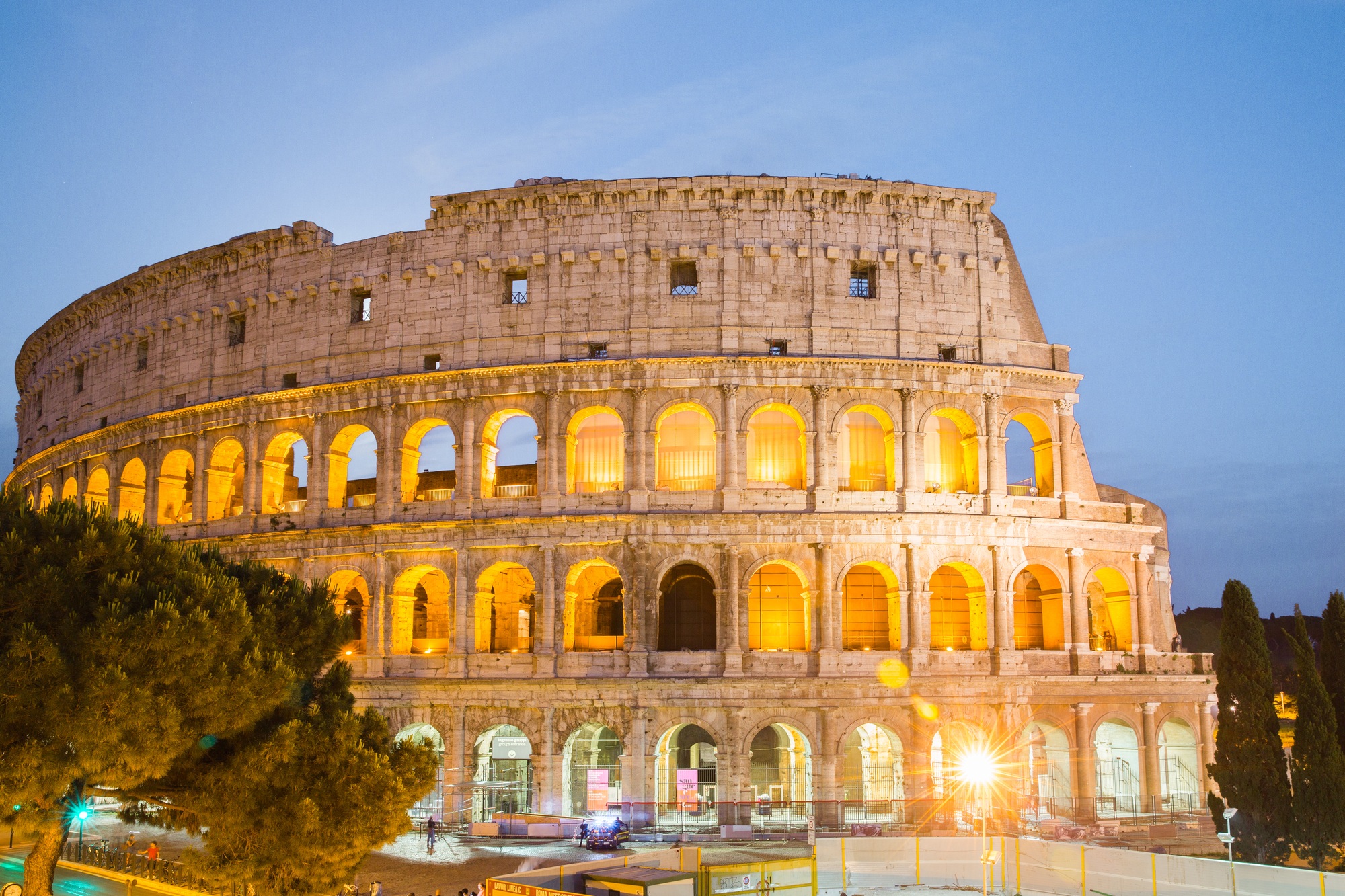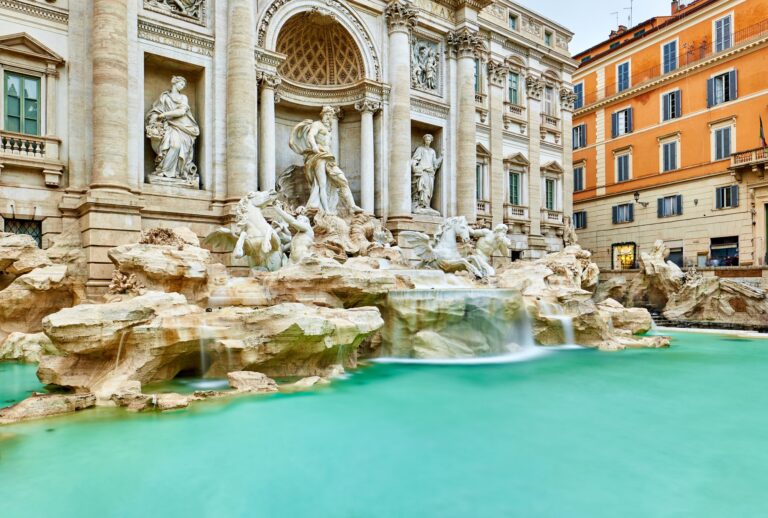10 Legendary Roman Amphitheaters You Must Explore
As the sun dips below the horizon, casting a golden hue over ancient ruins, imagine yourself transported back to the days when gladiators rose to fame in colossal arenas, and the crowd’s roar echoed through the stone arches. Each of these legendary amphitheaters tells a captivating story of survival, bravery, and architectural genius. Join us as we unravel the fascinating histories and tales of 10 roman amphitheaters that still hold sway over the imaginations of adventurers and history buffs alike.
Table of Contents
- Colosseum: Rome’s Grand Arena of Spectacles
- Amphitheater of El Djem: A North African Marvel
- Verona Arena: Echoes of Ancient Performances
- Pula Arena: The Jewel of Croatia
- Pompeii Spectacula: A Frozen Moment in Time
- Amphitheatre Nimes: A Fortress of Entertainment
- Roman Arena in Arles: The Bullfighting Ground
- Leptis Magna Arena: Hidden Gem of the Desert
- Pozzuoli Amphitheater: An Under-the-Radar Wonder
- Uthina Amphitheater: Echoes of a Lost Civilization
Colosseum: Rome’s Grand Arena of Spectacles
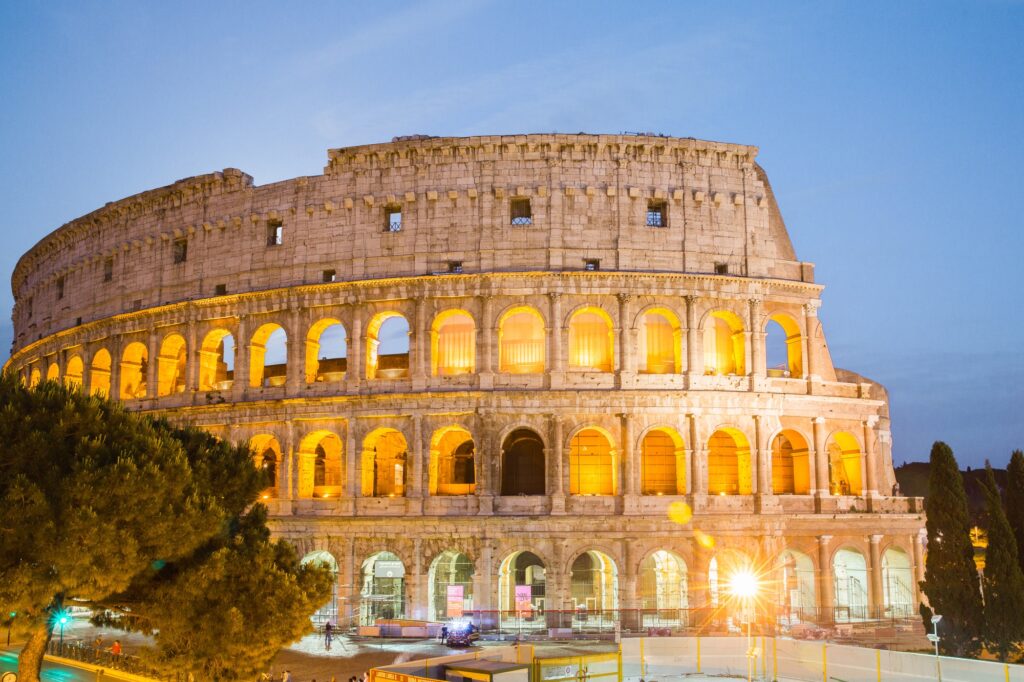
No journey through ancient architecture is complete without a visit to the Colosseum, the largest amphitheater ever built, standing proud amidst the ruins of Rome. Originating from the mind of Emperor Vespasian in 72 AD, its construction was completed by his son, Titus, in 80 AD. Imagine the jubilation in the air as this massive stone structure, capable of holding 50,000 eager spectators, officially opened its gates for 100 days of celebration filled with ferocious gladiator battles and wild beast shows.
Covered in a majestic velarium that sheltered spectators from sun and rain alike, the Colosseum was more than just a venue; it was a stage where the drama of life and death unfurled. Today, its surviving arches, despite the wear of time and nature, continue to invoke awe, beckoning visitors to step into the storied past of ancient Rome.
Amphitheater of El Djem: A North African Marvel
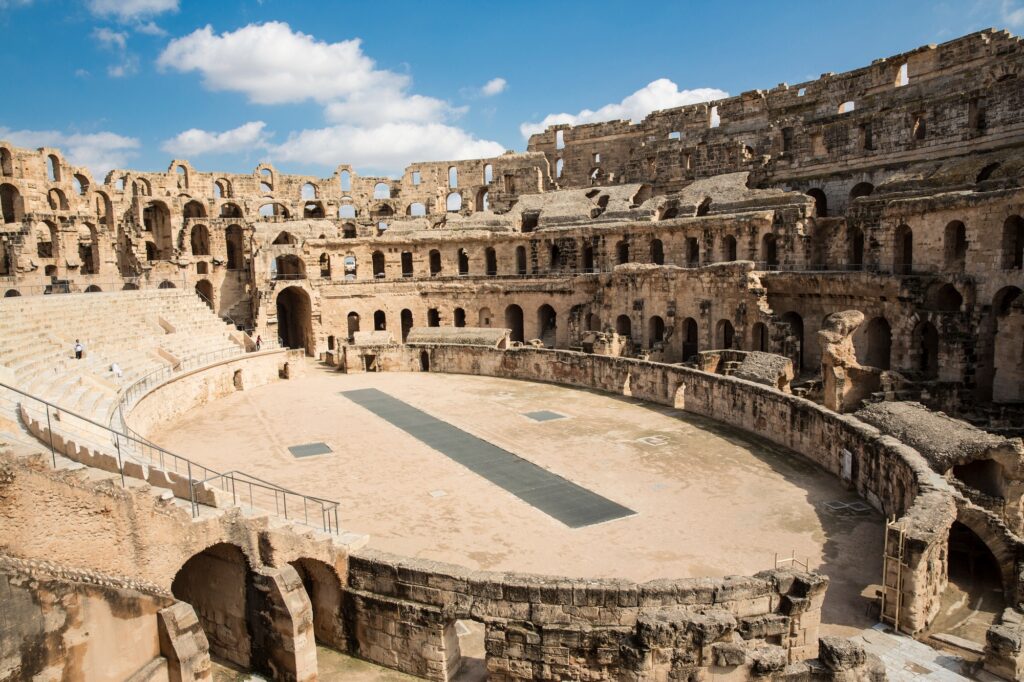
Travel to Tunisia, where the Amphitheater of El Djem stands as a testament to Roman engineering brilliance. Built in the early 3rd century AD, it could accommodate a staggering 35,000 spectators, making it the third largest arena in the world after its Roman counterparts. Picture this massive arena alive with the thrumming excitement of ancient games, where the air was charged with the cries of the crowd and the clash of swords.
Although stones were pilfered for local construction after the 17th century, the structure still mesmerizes visitors today. It famously served as a backdrop for scenes from the Oscar-winning film “Gladiator,” further cementing its place in both history and popular culture.
Verona Arena: Echoes of Ancient Performances
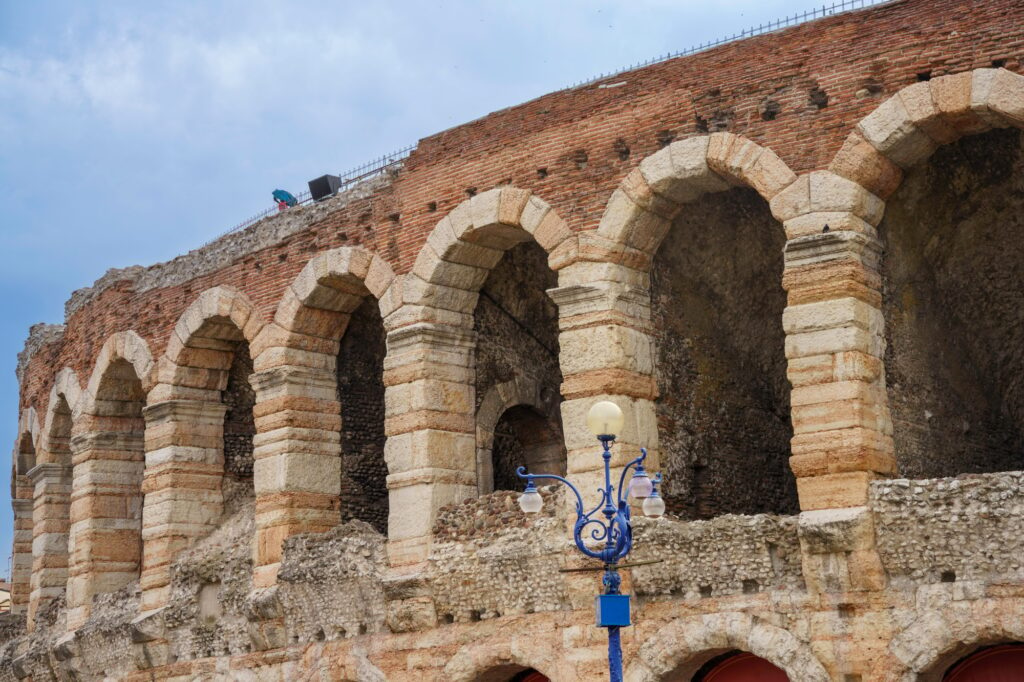
As you wander through the streets of Verona, the air thick with romance and history, Verona Arena beckons with tales of ancient performances. Constructed in 30 AD, this amphitheater, built from pink and white limestone, dazzles with its historical significance. It once held up to 30,000 spectators, immersing them in the electrifying world of gladiatorial combat.
The arena has survived numerous earthquakes, its resilience paralleling that of its enduring legacy as a venue for epic opera performances since the 18th century. As the sun sets, you can almost hear the distant echoes of arias sung beneath its ancient arches.
Pula Arena: The Jewel of Croatia
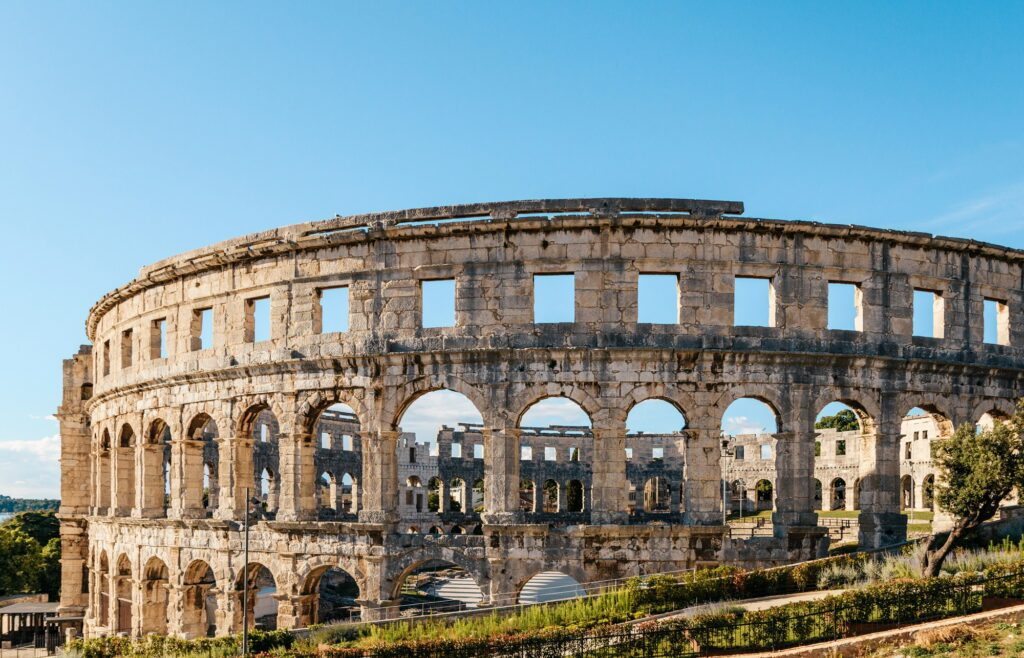
In the beautiful coastal town of Pula, the Pula Arena rises like a grand monument to the past. Completed in the 1st century AD, this splendid structure ranks as one of the best-preserved Roman arenas, capable of hosting 26,000 enthusiasts. Amidst the backdrop of azure skies, the amphitheater still hums with life, as it transforms during summer into a vibrant stage for concerts and performances.
The aura of history resonates through its arches and corridors, where gladiators once prepared for their battles and crowds roared with excitement. What once stood for blood and glory now serves as a vivid reminder of a glorious past.
Pompeii Spectacula: A Frozen Moment in Time
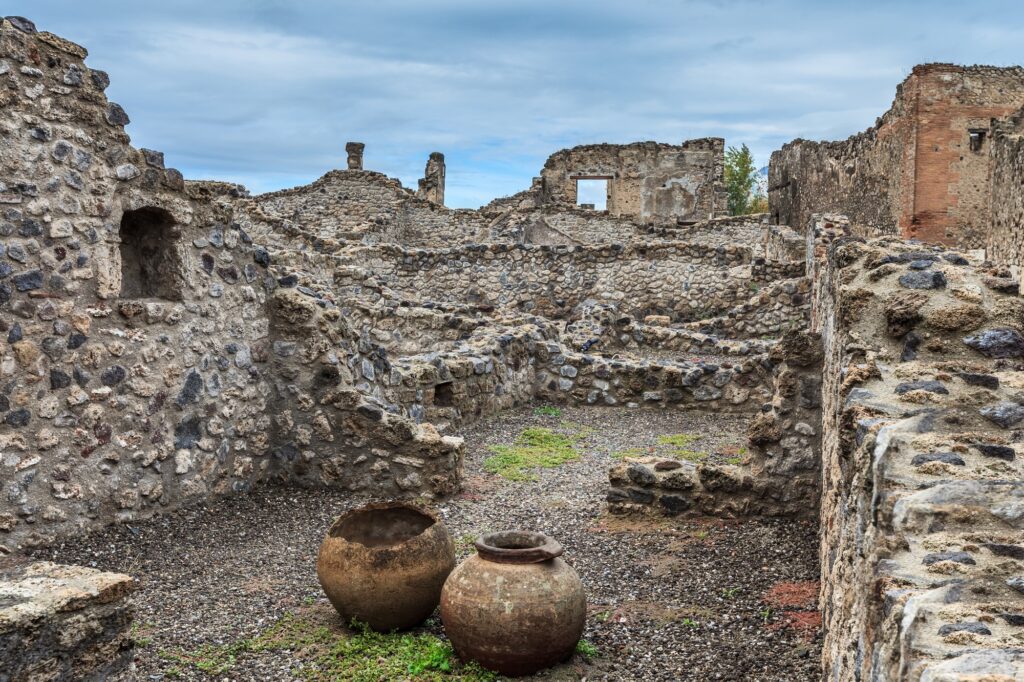
Step back in time to the tragic yet beautiful ruins of Pompeii, where the Pompeii Spectacula remains one of the oldest Roman amphitheaters. Built around 70 BC, prior to the catastrophic eruption of Mount Vesuvius in 79 AD, this amphitheater could hold 20,000 spectators—equal to the town’s population at the time.
The ash that gripped the city preserved it remarkably well, allowing visitors to glimpse society as it was just before disaster struck. It also became a battleground for a violent riot in 59 AD, revealing the passions of Roman games and their effects on the populace.
Amphitheatre Nimes: A Fortress of Entertainment
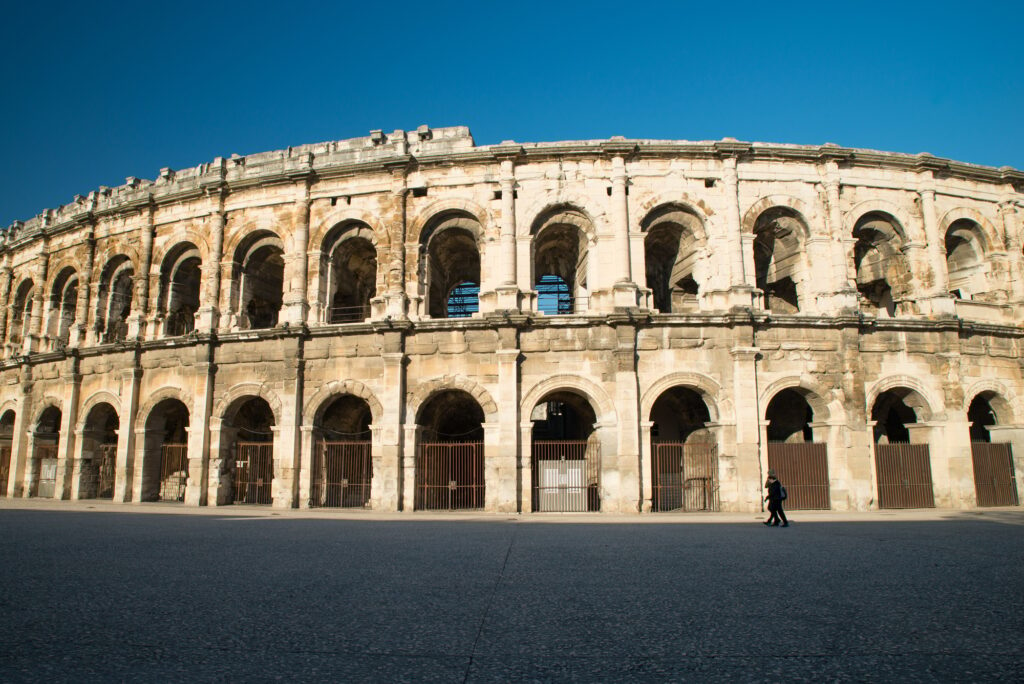
Head to southern France, where the Amphitheatre Nimes stands rooted in history, attracting tourists with its dramatic past. Constructed at the end of the 1st century AD, this magnificent arena could seat 24,000 spectators. Over the centuries it has metamorphosed from a gladiatorial arena to a fortress, then ultimately to a bullring that hosts thrilling events even today.
The echoes of battles and spectacles that once took place within its walls resonate with visitors, offering a sense of connection to the fierce passion of ancient entertained generations.
Roman Arena in Arles: The Bullfighting Ground
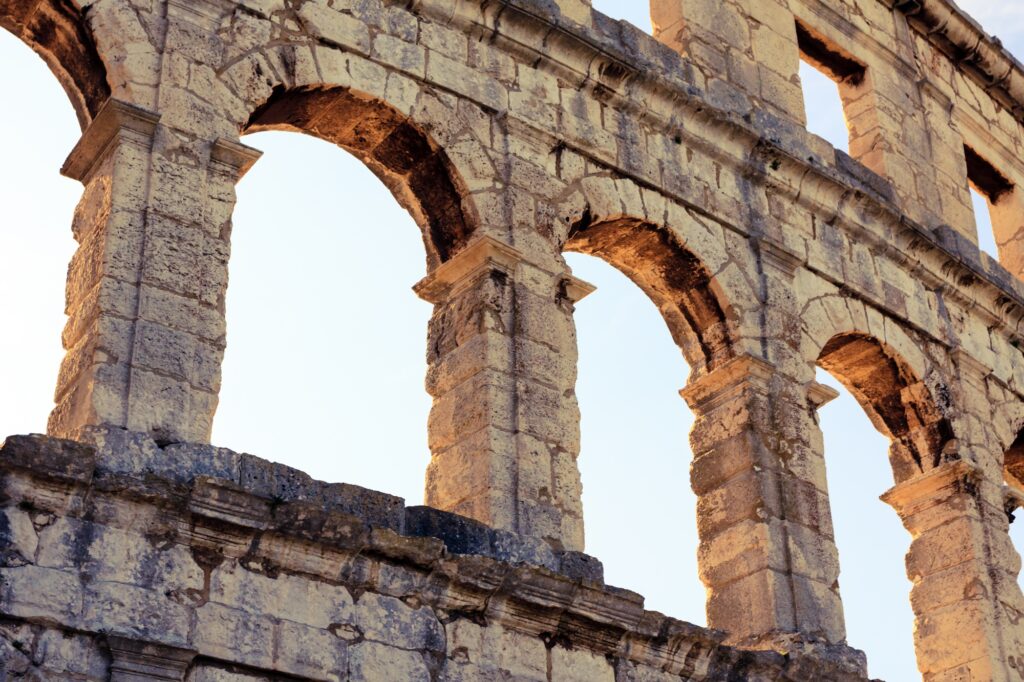
The historic city of Arles presents the Roman Arena, another architectural gem of ancient Rome, built around the 1st century BC. Capable of seating over 20,000 spectators on three magnificent tiers, this arena has intricately linked its history with bullfighting since the 19th century.
Walking through its arches, you can almost hear the clashes of hooves and the thrilling battles that entertained the citizens of ancient Rome, giving visitors a taste of the blood-soaked spectacles that defined an era.
Leptis Magna Arena: Hidden Gem of the Desert
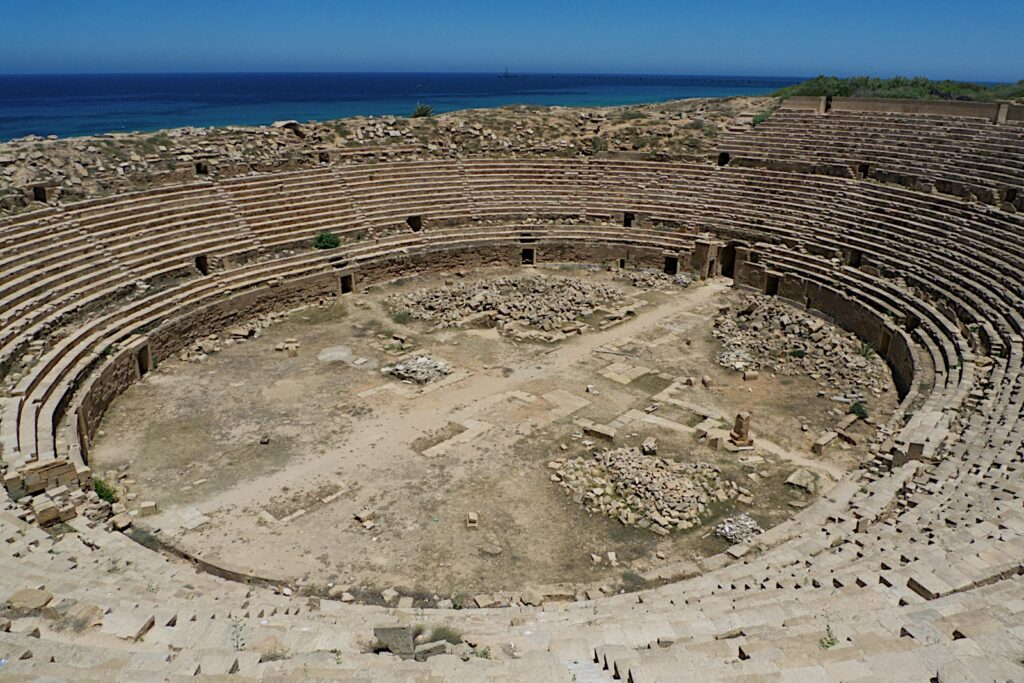
Discover the treasures of North Africa with the Leptis Magna Arena, nestled in modern-day Libya. Founded by the Phoenicians and becoming a vital part of the Roman Empire, this arena dates back to 56 AD. Imagine a bustling trade post where merchants and citizens gathered to watch the fierce contests between gladiators and wild animals.
Abandoned in 523 AD and later covered by sands of time, the amphitheater lies just east of the city center, inviting adventurers to uncover its stories buried beneath the desert floor. Its unspoiled beauty offers visitors an unparalleled look into the magnificence of Roman architecture.
Pozzuoli Amphitheater: An Under-the-Radar Wonder
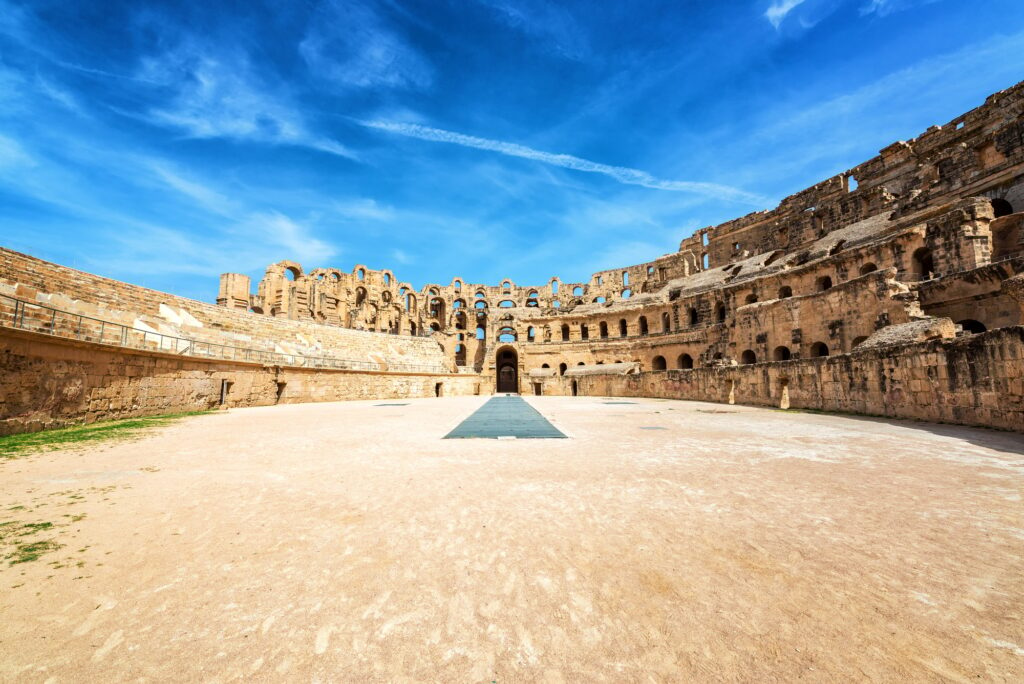
Further enriching the landscape of Italy, the Pozzuoli Amphitheater is one of the largest ancient structures of its kind, perpetuating tales from the reign of Emperor Vespasian. With a capacity of over 20,000, visitors are invited to wander its subterranean passages, where the sounds of roaring crowds and clashing swords still seem to linger in the air.
After centuries of abandonment following volcanic eruption devastation, this amphitheater now serves as a quiet reflection of the past, offering insights into the breath-taking engineering of ancient times.
Uthina Amphitheater: Echoes of a Lost Civilization
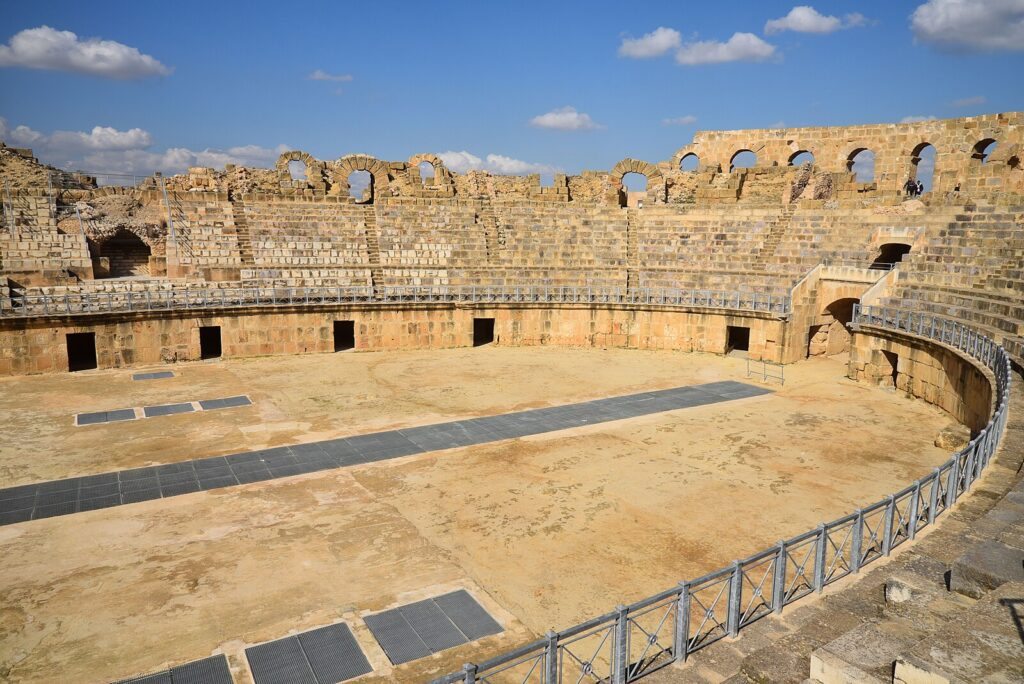
In the heart of Tunisia lies the forgotten city of Uthina, known for its remarkable Uthina Amphitheater. This expansive arena, carved into the hillside, could accommodate approximately 16,000 spectators in its raucous heyday. Like whispers of a lost civilization, the ruins tell tales of a time when this site was bustling with events and games.
Today, it stands as a visual reminder of the ancient world, slowly being uncovered from beneath layers of history, inviting a few curious visitors to delve into the life that once swirled within its walls.

